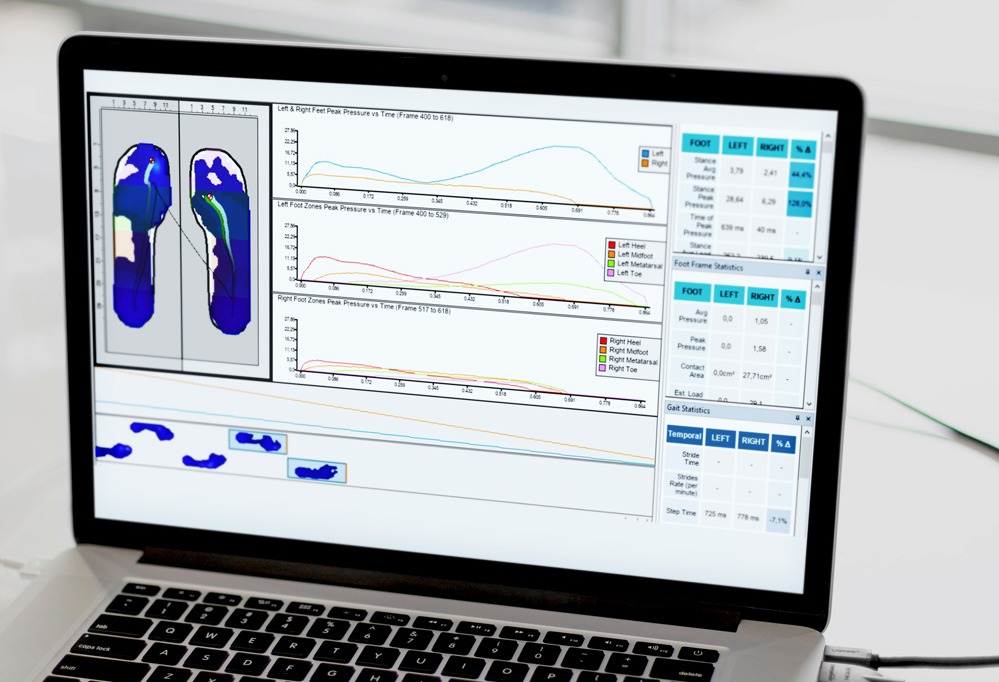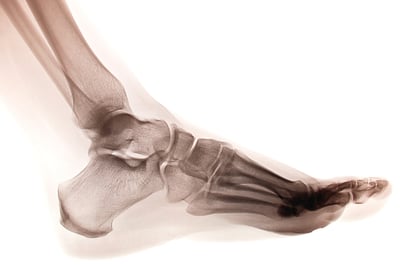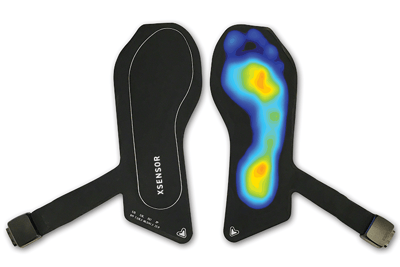
Analyzing Foot Zones to Improve Sport Performance
When it comes to athletic training, strength and conditioning coaches often overlook the foot-ankle complex — when analyzed properly, it provides critical information that can be used to improve sports performance.
The foot itself can be thought of as the interface between an athlete and the ground, or any surface over which an athletic skill is performed.
You can start to evaluate athletic performance by looking at the transmission of forces between the foot and the ground. Everything that stems from this exchange of forces always involves the foot-ankle complex, both as an:
- End point of biomechanical compensation, and
- The cause of all neuromuscular actions, starting from the ground up through the whole anterior-posterior kinetic chain
In fact, it’s not only the total force from this interaction that’s important, but also how this force is distributed over the sole of the foot, as well as the timing and duration of foot rollout. With advances in pressure mapping technology, you can divide and assess the foot in segments — rearfoot, midfoot and forefoot, and medial and lateral — and evaluate the force-time and pressure-time curves for each isolated zone.
Tools to Collect Plantar Pressure Data
Force plates and insole sensors can both be used to collect plantar pressure data. Used together, they can create a complete biomechanical and neuromuscular profile, but only one allows you to analyze different foot zones.
A force plate measures the total force (usually expressed in Newtons) applied to the surface of the platform, thus providing the total value of vertical force. Force plates are effective at measuring ground reaction forces during walking, jumping, or any other type of movement. The data from a force plate is useful, but it’s only one part of a larger picture.
 Insole pressure sensors, particularly high-resolution sensors, provide enough data points to enable the ability to divide the plantar pressure data into multiple zones laterally and medially. With foot zone pressure analysis, you can assess isolated curves for the rearfoot, midfoot and forefoot, compare both left and right asymmetries, and pressure and temporal characteristics during foot strike and propulsion phases (toe-off), for a total of 10 zones. With this, you can identify the statistics in each of the metatarsals and toes, and isolate the force-time and pressure-time curves for each segment.
Insole pressure sensors, particularly high-resolution sensors, provide enough data points to enable the ability to divide the plantar pressure data into multiple zones laterally and medially. With foot zone pressure analysis, you can assess isolated curves for the rearfoot, midfoot and forefoot, compare both left and right asymmetries, and pressure and temporal characteristics during foot strike and propulsion phases (toe-off), for a total of 10 zones. With this, you can identify the statistics in each of the metatarsals and toes, and isolate the force-time and pressure-time curves for each segment.
From a biomechanical point of view, movement occurs over time. Analyzing zone-by-zone how the foot interacts with the ground over time helps dramatically increase your understanding of an athlete’s performance.
Here are some insights you can gain with insole sensors:
Rearfoot force/time curve
Understand left-right symmetry with data and visualizations of heel lift timing to identify an early heel rise in one foot over the other.
Forefoot force/time curve
Identify points of prolonged pressure in the forefoot and/or a lateralization of the CoP (center of pressure) which could cause problems in the propulsion phase or a delay in the application of force due to potential compensations (lack of stability in the midfoot).
Segmentation is important when assessing foot function because it allows you to gain insights into gait performance or impairments by identifying the timing and statistically significant measured pressures as the foot moves through the stance phase.
If you’re thinking of including insole sensors in your practice, read more about XSENSOR’s Intelligent Insoles | Pro.
To learn more about what to look for before purchasing a gait analysis system, download our ebook, 7 Things to Consider When Choosing a Gait Analysis System.


